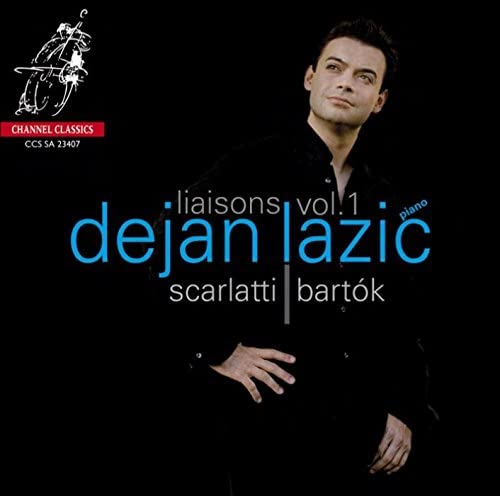
kompozytor
Bartok, Bela;
Scarlatti, Domenico
tytuł
Scarlatti & Bartok - Liasons Vol.1
wykonawcy
Lazic, Dejan
nr katalogowy
CCS SA 23407
opis
Nakład wyprzedany, ostatni egzemplarz At first sight, they appear to have nothing in common – but disregarding the stylistic elements and a difference of 2 centuries, you soon recognize that both are in a sense, musical architects, who as piano virtuosos were equally interested in miniature forms and inspired by folk music. On the one hand you have Scarlatti, who, after moving to Spain in 1729 composed almost exclusively for harpsichord and integrated elements of Spanish folklore into his compositions in an experimental way; on the other hand Bartk, who boosted the recognition of the rich native Hungarian peasant songs to an independent folk art, and was also influenced by Arabic folk music. Inspired by an 18th century performance practice, where two (…)
• Bartók: 6 Danses bulgares. extr. de Mikrokosmos, Vol.VI, Sz.107
• Bartók: 7 Sketches, BB 54, Sz. 44
• Bartók: Marche funèbre from Kossuth, BB 31
• Scarlatti, D: Keyboard Sonata K3 in A minor
• Scarlatti, D: Keyboard Sonata K9 in D minor
• Scarlatti, D: Keyboard Sonata K17 in F major
• Scarlatti, D: Keyboard Sonata K58 in C minor
• Scarlatti, D: Keyboard Sonata K82 in F major
• Scarlatti, D: Keyboard Sonata K135 in E major
• Scarlatti, D: Keyboard Sonata K159 in C major 'La caccia'
• Scarlatti, D: Keyboard Sonata K380 in E major
• Scarlatti, D: Keyboard Sonata K420 in C major
• Scarlatti, D: Keyboard Sonata K430 in D major
• Scarlatti, D: Keyboard Sonata K491 in D major
Works:
• Bartók: 3 Rondos on Slovak Folk Tunes, BB 92, Sz. 84
• Bartók: 6 Danses bulgares. extr. de Mikrokosmos, Vol.VI, Sz.107
• Bartók: 7 Sketches, BB 54, Sz. 44
• Bartók: Marche funèbre from Kossuth, BB 31
• Scarlatti, D: Keyboard Sonata K3 in A minor
• Scarlatti, D: Keyboard Sonata K9 in D minor
• Scarlatti, D: Keyboard Sonata K17 in F major
• Scarlatti, D: Keyboard Sonata K58 in C minor
• Scarlatti, D: Keyboard Sonata K82 in F major
• Scarlatti, D: Keyboard Sonata K135 in E major
• Scarlatti, D: Keyboard Sonata K159 in C major 'La caccia'
• Scarlatti, D: Keyboard Sonata K380 in E major
• Scarlatti, D: Keyboard Sonata K420 in C major
• Scarlatti, D: Keyboard Sonata K430 in D major
• Scarlatti, D: Keyboard Sonata K491 in D major
nośnik
SACD
gatunek
Muzyka klasyczna
producent
Channel Classics
data wydania
02-07-2007
EAN / kod kreskowy
723385234074

(Produkt nie został jeszcze oceniony)
cena 89,00 zł
lubProdukt dostepny w niewielkiej ilości.
Wysyłka w ciągu 3 dni roboczych
Darmowa wysyłka dla zamówień powyżej 300 zł!
Darmowy kurier dla zamówień powyżej 500 zł!
sprawdź koszty wysyłki








































